By Bus & Rail
Board votes unanimously for Crenshaw Boulevard transit project
December 10, 2009
The Crenshaw Boulevard transit project moved closer to reality Thursday as the Metropolitan Transportation Authority board voted to build the project as a light rail line and to officially dub it the Crenshaw/LAX Transit Corridor. The board’s unanimous vote, during a lively session before a standing-room-only audience, sends the project into the final environmental review phase.
The project will be financed by Measure R funds, the half-cent sales tax that was approved by county voters last year.
For a full report, go to Metro’s blog, The Source.
7 things you should know about the Westside Subway
October 31, 2009
With the Metro board’s recent approval of long range transportation projects for the region, the Westside Subway extension is embarking on an important new stage in its journey. With Santa Monica envisioned as the line’s ultimate destination, there is currently $4.1 billion in local funding, mostly from Measure R, to get it as far as Westwood. Federal dollars will be essential to finish the job.
Some critics of the proposed line argue that it will take too long to build, divert resources from other parts of the region and tunnel through some geological challenges. But proponents, including Supervisor Zev Yaroslavsky, an MTA board member, say the subway’s projected ridership success makes it the best bet for getting federal dollars, particularly since Measure R already is funding projects such as Expo Phase II, the Gold Line/Foothill extension and the Crenshaw Transit Corridor.
Key decisions are still to come on design and technical matters; community meetings are taking place to help determine the placement of stations, and there’s a new video to promote the project (thanks to Steve Hymon for flagging this at Metro’s new blog, The Source.)
So even though the first phase of the project—to Fairfax–won’t be completed until 2019, it’s not too early to know what’s driving the train.
It will go where jobs are.
The Westside has hundreds of thousands of jobs in a relatively concentrated area—currently 429,000 of them, according to the latest mid-year forecast by the Los Angeles County Economic Development Corp.– and commuters who live in outlying areas where housing is more affordable will be able to take advantage of them. That will be a boon to area business owners who’ve long complained about difficulties in hiring and retaining workers frustrated with time-consuming commutes, says Jack Kyser of the Kyser Center for Economic Research, one of the forecast’s authors. A bonus: those jobs are the highest-paying in the county—averaging $66,497 a year. The area also is home to UCLA, the 7th largest employer in the region, with more than 28,000 faculty and staff members.
It will create jobs.
Thousands of jobs will be created. As a rule of thumb, the building trades industry estimates 6,000 construction- and construction-related jobs per $1 billion invested in a project. The exact number of jobs in the long run, however, is hard to predict because those initially hired could stay with the project for multiple years, thus driving down the overall job count.
It will benefit commuters throughout the county.
Metro estimates that 64% of the line’s benefits—a federal formula measuring ridership and time saved–would go to those outside the Westside, with the greatest benefit (22 percent) accruing to the San Gabriel Valley. Metro research shows that more than 310,000 people travel into the Westside from across the region each morning, while 137,000 others leave it and 88,000 travel within it. Meanwhile, UCLA, California’s largest university, is a major area-wide draw with nearly 38,000 students, and the subway extension also has the potential of boosting cross-town access to a variety of major cultural venues, from Disney Hall and the Museum of Contemporary Art (MOCA) to the Los Angeles County Museum of Art and Royce Hall.
It will save thousands of hours in commuting time.
A hypothetical twice-a-day commuter from Koreatown to Westwood would get back the equivalent of eight days in saved commuting time each year by using the subway, according to Metro estimates. Someone commuting from Pasadena would save even more time–12 days a year. To put it another way, that Pasadena commuter currently spending 82 minutes to get from Pasadena to Westwood on public transportation would be able to make the one-way trip in just 50 minutes. “It actually shrinks the city, in a sense,” says David Karwaski, planning and policy manager in UCLA’s Transportation Services Department.
It will help LA to get a greater share of federal transit dollars.
Putting this project in the pipeline sets the stage for Los Angeles to get an allotment that’s more like the New York/New Jersey behemoth, shown in this Metro graphic representing 2010 federal funding for new transit starts. A far more robust showing is possible in the future now that the board has adopted its long range projects priority list. Move over, New York and Salt Lake City. Hello, Los Angeles.
It will help relieve overcrowding on the region’s busiest bus corridor, Wilshire Boulevard.
The Wilshire corridor is the most heavily used bus corridor in the County of Los Angeles, with some 70,000 boardings every weekday from downtown to Santa Monica. With tens of thousands of office workers pouring into the area each day, and bumper-to-bumper traffic at peak hours not only on Wilshire but on the Santa Monica Freeway, the project provides a new option for bus riders while also easing the overall traffic crunch.
It beats taking the 10.
Need we say more?
Expo delays mean possible “partial opening” next year *
October 29, 2009
The new Expo Line, originally envisioned to be up and running from downtown Los Angeles to Culver City by next summer, is now expected to open sometime in 2011. But efforts are underway to determine whether a “partial opening” of the light rail line—perhaps as far as the Crenshaw station—can take place before the end of next year.
The shifting timetable means that the Culver City station is not expected to open until 2012.
Meanwhile, work is progressing on the final environmental impact report for Phase 2 of the project, which would extend the line from Culver City to Santa Monica.
Responding to direction from Supervisor Zev Yaroslavsky, the Expo staff is now working with community groups to resolve concerns about traffic, grade crossing safety, proposed parking restrictions on Westwood Boulevard and Overland Avenue, and the line’s proposed Santa Monica maintenance facility.
“We are working with the communities to address their concerns,” says Expo spokeswoman Gabriela G. Collins.
The Exposition Construction Authority’s board will be asked to approve the final environmental impact report for Phase 2 at its January meeting.
When completed, Phase 1 of the Expo Line will be roughly 8.6 miles in length and parallel the heavily congested Santa Monica Freeway. The estimated travel time from downtown Los Angeles to Culver City will be less than 30 minutes, with a projected ridership of 27,000 by 2020. By the time Phase 2 is complete, it would possible to travel the entire length of the line—from the 7th Street station downtown to Santa Monica—in 44 to 50 minutes. The total ridership is expected to reach up to 64,000 a day by 2030.
Expo officials describe the line as a “Transit Parkway” that will include bike and pedestrian paths, as well as trees and landscaping along the alignment.
Transportation projects tend to move slowly, but those seeking a jolt of instant gratification can take a video ride on the Expo line, courtesy of this clip created by the Urban Simulation Team at UCLA.
Other information about the project is available at here.
Updated 12/16:
With the final environmental impact report on Phase 2 of the Expo Line expected to be released later this week, the Exposition Metro Line Construction Authority has agreed to postpone till Feb. 4 the Expo board’s vote on the plan.
The delay, requested by Los Angeles City Councilmembers Paul Koretz and Bill Rosendahl and supported by Los Angeles County Supervisor Zev Yaroslavsky, will allow more time for interested residents and community and elected leaders to review the plan before it comes before the Expo board.
Once the final environmental impact report is certified by the board, a contractor can be selected and the construction phase will begin.
Updated 12/21:
The final environmental impact report for Expo Phase 2 has been released. Read it here. The Exposition Construction Authority’s Board of Directors will consider it on Thursday, February 4. The meeting will start at 2 p.m. and will be held in the Board of Supervisors’ hearing room on the third floor of the Kenneth Hahn Hall of Administration, 500 W. Temple Street, Los Angeles, 90012.
The Orange Line: Moving forward
April 30, 2009
In late 2005, on the day the Orange Line made its maiden trip along Canoga Avenue, the Los Angeles Times gave the instantly popular busway a nickname: “The Napkin Line.”
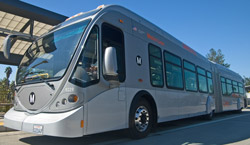 As the paper correctly noted in its rave review, the line’s route through the San Fernando Valley had been sketched on a napkin by Supervisor Zev Yaroslavsky as he and other elected officials and transit planners flew back from a 1999 fact-finding mission in Curitiba, Brazil. There, they’d seen the stunning efficiency of a high-occupancy bus system that used dedicated roadways and timed traffic signals to keep the buses moving swiftly through intersections—at a fraction of the cost of burrowing a subway tunnel.
As the paper correctly noted in its rave review, the line’s route through the San Fernando Valley had been sketched on a napkin by Supervisor Zev Yaroslavsky as he and other elected officials and transit planners flew back from a 1999 fact-finding mission in Curitiba, Brazil. There, they’d seen the stunning efficiency of a high-occupancy bus system that used dedicated roadways and timed traffic signals to keep the buses moving swiftly through intersections—at a fraction of the cost of burrowing a subway tunnel.
Today, the Orange Line is mirroring that success. In fact, the system has proved such a hit with commuters that an extension of the 14-mile route is now in the works, with completion scheduled for 2012. This new 4-mile segment will link commuters with the Chatsworth Metrolink station.
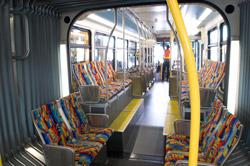 The Orange Line—named in tribute to the Valley’s early agricultural roots—currently runs from Warner Center to North Hollywood, where riders can catch the Red Line subway to Downtown L.A. or points elsewhere. To speed up the operation, riders purchase fares before boarding, as they do for the region’s subways.
The Orange Line—named in tribute to the Valley’s early agricultural roots—currently runs from Warner Center to North Hollywood, where riders can catch the Red Line subway to Downtown L.A. or points elsewhere. To speed up the operation, riders purchase fares before boarding, as they do for the region’s subways.
So far, according to Metropolitan Transportation Authority figures, the Orange Line’s 35 super-sized buses have transported nearly 33 million passengers, an average of more than 7 million a year—far exceeding the agency’s initial conservative predictions. As gas prices soared in the summer of 2008, the Orange Line scorched one ridership record after another.
Transit planners also were determined to create a commuting experience along the old Union Pacific rights-of-way that addressed the concerns and interests of the broader community. Among other things, the MTA:
• Planted 5,000 trees and 800,000 environmentally-friendly native plants along the route.
• Built 8 miles of new bike and pedestrian paths that are fully lit, with racks and lockers at all stations.
• Commissioned 15 California artists to design artwork unique to each station.
• Erected more than 5 miles of sound walls with an anti-graffiti design.
Supervisor Yaroslavsky says he had few doubts that the scribbles on his airline napkin would one day materialize into one of the nation’s great transit achievements.
“When I met with Curitiba Mayor Jaime Lerner, the genius behind his city’s busways, I asked him to what did he attribute the success of his transit system. His response is etched in my memory: ‘Have the courage to try simple solutions.’
“The Orange Line is a simple idea that has proven to be the most successful busway in the United States. It was a transit solution that was staring us in the face, and all we needed was the courage to build it.”
Stimulus bill gets LA transit projects rolling
March 6, 2009
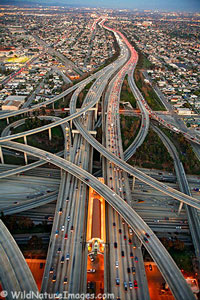 Supervisor Yaroslavsky and his Metro Board colleagues have moved quickly to line up priority transit projects in the Southland eligible for federal funding under the American Recovery and Reinvestment Act of 2009 (ARRA), the economic stimulus bill recently signed by President Obama.
Supervisor Yaroslavsky and his Metro Board colleagues have moved quickly to line up priority transit projects in the Southland eligible for federal funding under the American Recovery and Reinvestment Act of 2009 (ARRA), the economic stimulus bill recently signed by President Obama.
Transit officials estimate that Los Angeles can expect an infusion of federal cash totaling between $800 million and $1 billion for desperately needed road and rail transit improvements throughout the County. Adding some urgency to the process is a “use it or lose it” provision that gives the County 120 days to commit at least 50% of the highway project funding, and 180 days to commit at least 50% of public transit and grant program funding.
Yaroslavsky cited a number of key projects of particular interest and benefit to the Third District.
Bus Operations
The stimulus package contains $301 million for bus operations and capital investment in the County’s regional and municipal bus systems, with the lion’s share – 73.3%, or some $219.5 million – designated for Metro’s Countywide bus system. Metro plans to purchase 100 new buses, rebuild and repair 200 more in its aging fleet and contract for 53 additional buses to expand various bus line services around the County.
Rail Modernization
Rail passengers can also look forward to some improvements. Riders on the downtown-to-Long Beach Blue Line light rail will benefit from a $14 million traction power substation project to upgrade the electrical system and ensure continued reliable operation of the Blue Line, which first opened in July 1990. The Metro Board also approved a $5.3 million project to begin work on a train collision avoidance system after several devastating Metrolink commuter train crashes in recent years.
Road Work
The Federal Highway Administration (FHWA) has officially released $26.7 billion in ARRA highway formula funding appropriated for the states, with California’s share at $2.57 billion. The County of Los Angeles is due to receive at least $215 million allocated by population, and possibly up to $315 million with additional state legislation, funding hundreds of local projects throughout the County’s 88 cities. Another $200 million has been set aside for an ambitious HOV lane project on the northbound San Diego Freeway (I-405) between the Santa Monica (I-10) and the Ventura Freeways (I-101).




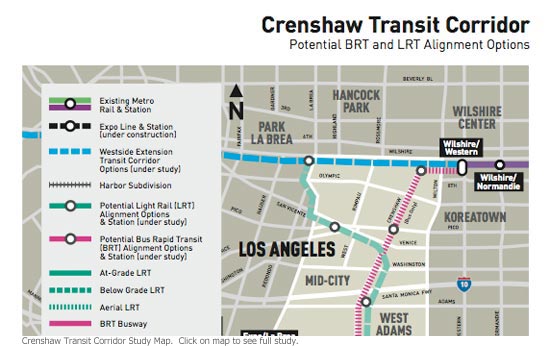
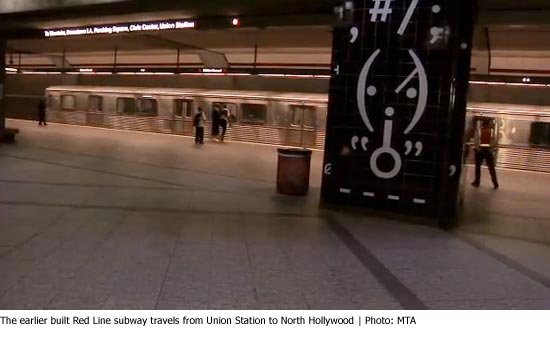

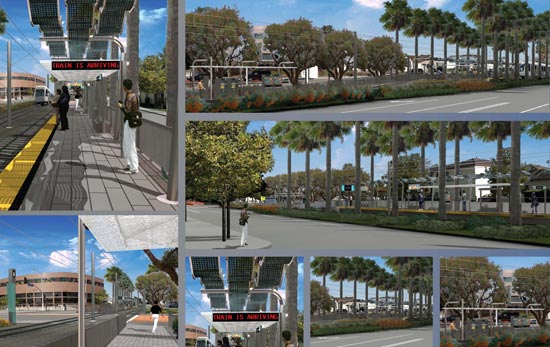







 405 bridge work causes a stink
405 bridge work causes a stink

